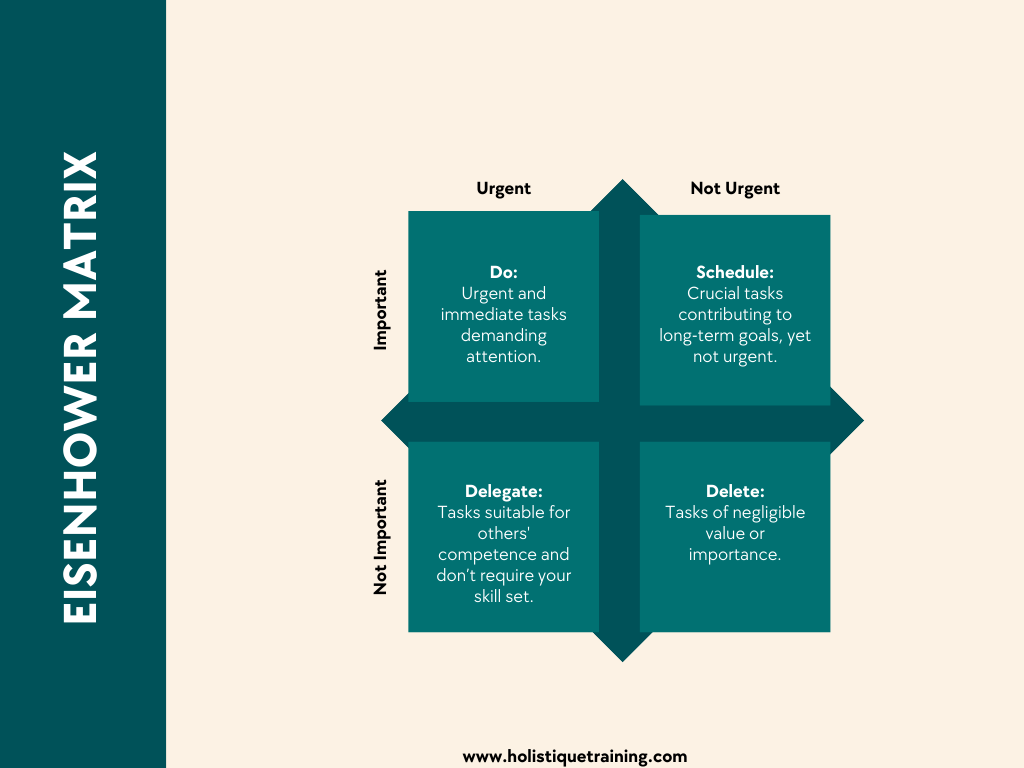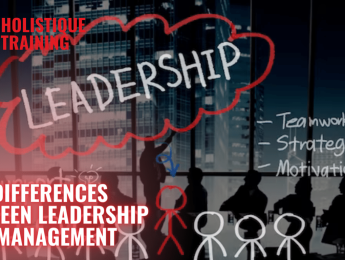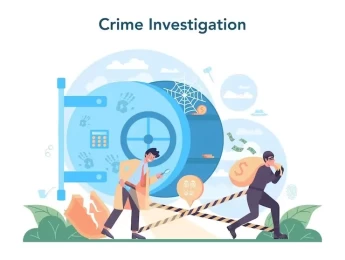Introduction
Welcome to the world of multitasking, where the demands on our time seem endless, and our to-do lists never seem to shrink. In this dynamic environment, the ability to prioritise workload effectively becomes a crucial skill. Whether you're a seasoned professional or a budding entrepreneur, mastering the art of prioritisation can make the difference between drowning in tasks and confidently navigating your workload. In this comprehensive guide, we'll explore what prioritising truly means, why it's essential, various task prioritisation methods, practical steps to prioritise your workload, and how technology can be your ally in this journey. Additionally, we'll discuss how to showcase your prioritisation skills on your resume and cover letter.
What Is Prioritising?
At its core, prioritising is the process of organising and managing tasks or activities based on their importance and urgency. It's not just about getting things done; it's about getting the right things done at the right time. Think of it as creating a roadmap for your day, ensuring that your efforts align with your goals and contribute to your overall success.
Why Is Prioritising Your Workload Important?
While a proper time management system is crucial, a staggering 82% of individuals, as per Zippia's data, lack one. Prioritising your workload is not merely a time-management strategy; it's a mindset that can significantly impact your productivity and overall well-being. Here's why prioritisation is crucial:
Efficiency Boost
Imagine your workload as a vast landscape, and each task as a unique landmark. Without a roadmap, navigating this terrain becomes chaotic, leading to wasted time and effort. Prioritising your workload is akin to having a well-drawn map that guides you to the most critical destinations first. By focusing on high-impact tasks, you not only accomplish more but also do so with increased efficiency.
In essence, prioritisation allows you to cut through the clutter and direct your energy towards tasks that align with your overarching goals. It's not about merely being busy; it's about being purposeful in your actions, ensuring that each effort contributes meaningfully to your personal and professional journey.
Stress Reduction
A never-ending to-do list can be overwhelming, often leading to stress and burnout. Prioritising your workload acts as a powerful stress-management tool. By breaking down your tasks and organising them based on their importance and urgency, you create a structured approach to your day.
When you have a clear understanding of what needs immediate attention and what can wait, the weight of an unmanageable workload lifts. This clarity not only reduces stress but also provides a sense of control, empowering you to tackle challenges with a composed and focused mindset.
Goal Alignment
In the hustle and bustle of daily tasks, it's easy to lose sight of the bigger picture. Prioritising your workload ensures that your daily activities align with your long-term goals. It's a strategic approach that prevents you from getting lost in the minutiae of day-to-day operations.
When you consistently prioritise tasks that contribute to your overarching objectives, you create a sense of purpose in your work. This alignment between daily actions and long-term goals not only fosters a sense of fulfilment but also propels you towards sustained success.
Improved Decision-Making
Effective prioritisation is rooted in a deep understanding of the relative importance of each task. This clarity not only guides your actions but also enhances your decision-making process. When you know which tasks require immediate attention and which can be deferred, you make informed choices about where to invest your time and resources.
Improved decision-making, in turn, leads to increased effectiveness. You become adept at discerning between tasks that contribute significantly to your goals and those that may be distractions. This strategic approach elevates your overall performance and sets the stage for continued growth and achievement.
In essence, prioritising your workload transcends the realm of time management; it's a holistic approach to managing your professional and personal life. By embracing prioritisation as a mindset, you pave the way for increased efficiency, reduced stress, goal alignment, and improved decision-making — all essential elements for a successful and fulfilling journey.
Task Prioritisation Methods
Now that we understand the significance of prioritising, let's delve into some popular task prioritisation methods:
1. Eat the Frog
Coined by productivity expert Brian Tracy, the ‘Eat the Frog’ method encourages individuals to tackle their most challenging or unpleasant task first thing in the morning. The concept draws its inspiration from a quote attributed to Mark Twain: "Eat a live frog first thing in the morning, and nothing worse will happen to you the rest of the day."
This method recognises that daunting tasks often linger in the back of our minds, sapping our mental energy and hindering overall productivity. By confronting the most challenging task early in the day, you not only remove a mental burden but also set a positive tone for the rest of your tasks. "Eating the frog" is about embracing discomfort and leveraging it as a catalyst for increased productivity and accomplishment.
2. Eisenhower Matrix
Named after former U.S. President Dwight D. Eisenhower, this matrix is a visual tool that categorises tasks based on their urgency and importance. The matrix consists of four quadrants:
- Urgent and Important (Quadrant I): Tasks that demand immediate attention and are crucial to your goals.
- Important, Not Urgent (Quadrant II): Tasks that contribute to your long-term objectives but are not time-sensitive.
- Urgent, Not Important (Quadrant III): Tasks that are time-sensitive but don't significantly contribute to your goals.
- Not Urgent, Not Important (Quadrant IV): Tasks that are neither time-sensitive nor essential to your goals.
By categorising tasks into these quadrants, the Eisenhower Matrix provides a visual framework for prioritisation. It helps individuals focus on tasks that truly matter while minimising the impact of less crucial activities.

3. ABCDE Method
Developed by time management expert Alan Lakein, the ABCDE method involves assigning priorities to tasks using letters. The method categorises tasks as follows:
- A tasks: The most important and urgent tasks.
- B tasks: Important but not urgent tasks.
- C tasks: Tasks that can be delegated to others.
- D tasks: Tasks that can be delayed.
- E tasks: Tasks that can be eliminated.
This method provides a nuanced approach to prioritisation, allowing individuals to differentiate between tasks requiring immediate attention and those that can be deferred or delegated. By assigning letters to tasks, you create a clear hierarchy that guides your focus and efforts.
4. Chunking
While not a formal method, the concept of chunking involves breaking down large, complex tasks into smaller, more manageable chunks. This approach recognises that overwhelming tasks can be paralysing, leading to procrastination, which, according to the American Psychological Association, affects 20% of adults.
By dividing a complex task into smaller, actionable steps, you make the overall workload more digestible. Each "chunk" becomes a mini-goal, providing a sense of accomplishment upon completion. Chunking is particularly effective when facing projects with multiple components, allowing you to navigate intricate tasks with greater ease and efficiency.
Incorporating these task prioritisation methods into your workflow requires a thoughtful understanding of your personal preferences and the nature of your tasks. Experiment with these methods to discover which resonates best with your working style, and consider combining elements from different approaches to create a customised prioritisation strategy tailored to your unique needs.
8 Steps for Prioritising Your Workload
Now, let's explore a practical eight-step process for effectively prioritising your workload:
1. List Your Tasks
Begin by creating a comprehensive list of all the tasks on your plate. This includes work-related projects, personal commitments, and any other responsibilities that demand your attention. This step serves as the foundational building block for effective prioritisation, ensuring that no task goes unnoticed or unaccounted for.
2. Identify Urgency and Importance
Studies show that on average, more than half of the workday is dedicated to tasks with low to no value. Here’s what you need to do to avoid that: Once you have your list, use the Eisenhower Matrix to categorise tasks based on their urgency and importance. This visual tool prompts you to distinguish between tasks that are both urgent and important, important but not urgent, urgent but not important, and neither urgent nor important. This categorisation lays the groundwork for the subsequent steps by offering a clear overview of your workload.
3. Apply the ABCDE Method
With the Eisenhower Matrix as your guide, apply the ABCDE method to further refine your prioritisation. Assign letters to tasks based on their significance, designating 'A' for the highest priority, 'B' for important but not urgent tasks, 'C' for those that can be delegated, 'D' for tasks that can be delayed, and 'E' for tasks that can be eliminated altogether. This step adds an additional layer of clarity, helping you discern the critical tasks that demand immediate attention.
4. Consider Deadlines
Incorporate a consideration of deadlines into your prioritisation process. Identify tasks with impending deadlines and factor in the time required for completion. Tasks with close deadlines may need to be prioritised higher, ensuring that you allocate resources and attention appropriately to meet time-sensitive requirements.
5. Evaluate Dependencies
Consider whether certain tasks are dependent on the completion of others. Understanding task dependencies is crucial for maintaining a seamless workflow. Prioritise tasks that are prerequisites for others to prevent bottlenecks and ensure a smooth progression of your projects.
6. Assess Your Energy Levels
Be mindful of your energy levels throughout the day. Allocate high-energy periods to tasks that demand intense focus and creativity. Conversely, reserve lower-energy times for more routine or administrative activities. Aligning tasks with your natural energy fluctuations optimises your productivity and enhances your ability to tackle challenges effectively.
7. Review and Adjust
Regularly review and adjust your priorities as circumstances evolve. Flexibility is key in a dynamic work environment. Stay open to adapting your plan based on changing deadlines, emerging priorities, or unexpected challenges. A regular reassessment ensures that your prioritisation remains relevant and effective.
8. Communicate Effectively
If you're part of a team, effective communication is paramount. Clearly communicate your priorities to colleagues and stakeholders, ensuring everyone is aligned on project timelines and objectives. Be open to adjusting priorities based on team dynamics and shared goals. Collaborative communication enhances overall team efficiency and ensures collective success.
Incorporating these eight steps into your prioritisation process transforms it from a routine task management exercise to a strategic and dynamic approach. By systematically organising your workload, you not only enhance your personal productivity but also contribute to the overall success of your projects and team. Remember, effective prioritisation is not a one-time effort; it's an ongoing practice that adapts to the ever-changing landscape of your professional and personal responsibilities.
Table 1: Challenges of Prioritising Your Workload & Mitigation Strategies
Challenges | Mitigation Strategies |
Multiple tasks with similar urgency. | Prioritise based on long-term impact. |
Unforeseen urgent tasks disrupt plans. | Allocate flexible time for unexpected tasks. |
Lack of clarity on task importance. | Utilise the Eisenhower Matrix for guidance. |
Overwhelming workload, causing stress. | Break tasks into manageable chunks. |
Team communication gaps on task priority. | Implement regular, transparent communication protocols. |
The Role of Technology in Prioritising Your Workload
In the digital age, technology can be a valuable ally in managing and prioritising your workload. Here are some ways you can leverage technology for better task prioritisation:
Task Management Apps
Task management applications are the cornerstone of a well-organised digital workspace. Tools like Todoist, Trello, and Asana empower you to create, organise, and prioritise tasks with ease. These apps often come equipped with features such as due dates, project boards, and collaboration functionalities, allowing you to break down your workload into manageable components and assign priorities seamlessly.
By centralising your tasks in a digital environment, you gain the ability to access and update your priorities from various devices. This accessibility ensures that you remain on top of your tasks, whether you're at your desk or on the go, fostering a more agile and responsive approach to task management.
Calendar Integration
Syncing your task list with your calendar provides a visual representation of your priorities over time. Calendar integration allows you to allocate specific time slots to high-priority activities, turning your to-do list into a dynamic schedule. This visual approach helps you understand the ebb and flow of your workload, ensuring that you allocate time efficiently and meet deadlines effectively.
Moreover, calendar integration enables you to set reminders for important tasks, reducing the risk of overlooking time-sensitive assignments. This digital pairing of task management and calendaring creates a comprehensive system that aligns your priorities with your daily schedule.
Time-Tracking Tools
Understanding how you spend your time is integral to effective prioritisation. Time-tracking tools, such as Toggl and RescueTime, provide insights into your productivity patterns. These tools automatically record the time you spend on different tasks and projects, offering a detailed breakdown of where your efforts are concentrated.
By analysing this data, you can identify patterns, assess the accuracy of your time estimates, and make informed decisions about task priorities. Time-tracking tools empower you to optimise your workflow, ensuring that your efforts align with your strategic objectives.
Automation
Repetitive and routine tasks can be time-consuming and prone to human error. Enter automation tools. Platforms like Zapier and Microsoft Power Automate enable you to automate repetitive processes, freeing up time for more strategic and high-priority work.
By automating routine activities, you not only reduce the risk of errors but also increase overall efficiency. Automation is a valuable ally in your quest for effective prioritisation, allowing you to focus on tasks that demand your unique skills and attention.
Incorporating technology into your prioritisation strategy is not about replacing human intuition; it's about augmenting your capabilities and creating a more intelligent and responsive workflow. As you explore these technological tools, keep in mind that the key is to find a seamless integration that aligns with your working style and enhances your ability to prioritise with precision.
Remember, technology is not a one-size-fits-all solution. Experiment with different tools, assess their impact on your workflow, and tailor your digital toolkit to create a personalised system that optimises your task prioritisation efforts. The marriage of human intelligence and technological prowess sets the stage for a more efficient and productive approach to managing your workload.
How to Highlight Your Prioritisation Skills
As you refine your prioritisation skills, it's essential to showcase them effectively on your resume and cover letter. Here's how:
1. Use Action Verbs
Begin by infusing your resume with action verbs that convey your proactive approach to prioritisation. Words such as "organised," "managed," and "prioritised" carry a sense of purpose and initiative. For instance, instead of saying, "Responsible for task management," you can assert, "Lead the prioritisation and management of tasks to ensure seamless project execution."
Action verbs not only grab attention but also paint a vivid picture of your role in driving prioritisation within your previous roles.
2. Quantify Achievements
Wherever possible, quantify the impact of your prioritisation efforts. Numbers and percentages add tangible evidence of your effectiveness. For instance, if you successfully improved project timelines through strategic prioritisation, you might state, "Implemented prioritisation strategies resulting in a 20% reduction in project completion times."
Quantifying achievements not only reinforces your prioritisation skills but also provides a clear understanding of the magnitude of your contributions.
3. Highlight Results
In a results-driven world, emphasising the outcomes of your prioritisation efforts is crucial. Create a dedicated section on your resume that highlights the positive results of your strategic approach. Whether it's increased team efficiency, successful project completions, or enhanced workflow management, explicitly connect your prioritisation skills to measurable outcomes.
For example, ‘Prioritised tasks to align with project goals, resulting in a 15% improvement in team efficiency and a 10% reduction in project delivery time.’
4. Tailor Your Resume
Tailor your resume for each application, emphasising experiences and skills that align with the specific requirements of the job. If the position emphasises the need for effective prioritisation, ensure that your resume prominently features relevant experiences, achievements, and skills in this area.
Use keywords from the job description to optimise your resume for applicant tracking systems, which many employers use to streamline the initial screening process.
5. Craft a Compelling Cover Letter
Your cover letter is an opportunity to weave a narrative that goes beyond the bullet points on your resume. Use it to provide specific examples of how your prioritisation skills have positively impacted your previous roles.
For instance, share a concise story of a time when your strategic prioritisation led to the successful completion of a crucial project under tight deadlines. Illustrate the challenges you faced, the decisions you made, and the ultimate positive outcomes.
6. Mention Relevant Tools
If you have experience with specific task management or productivity tools, mention them on your resume. Familiarity with popular tools such as Trello, Asana, or Jira can be an added advantage and showcases your technical proficiency in optimising prioritisation processes.
Demonstrating your ability to leverage technology for efficient task management reinforces your commitment to staying at the forefront of industry best practices.
In summary, crafting a compelling narrative of prioritisation skills on your resume and cover letter involves a combination of strategic language, quantifiable achievements, and tailored storytelling. By doing so, you not only communicate your proficiency in task prioritisation but also position yourself as a candidate who brings a strategic mindset and tangible results to the table. This dual approach enhances your appeal to potential employers seeking individuals with a proven track record of navigating and optimising workloads.
Conclusion
In the complex tapestry of professional and personal responsibilities, the ability to prioritise your workload emerges as a key determinant of success. By understanding the various prioritisation methods, implementing practical steps, and leveraging technology, you can navigate the demands on your time with finesse. As you hone your prioritisation skills, remember to showcase them on your resume and cover letter, allowing potential employers to recognise the value you bring to their team. Mastering workload prioritisation is not just a skill; it's a strategic approach that empowers you to achieve your goals, one prioritised task at a time.
In your journey towards mastering workload prioritisation, why not elevate your skills to the next level? Our course, ‘Effective Task and Time Management,’ is designed to provide in-depth insights into advanced prioritisation techniques, time optimisation strategies, and cutting-edge tools. Gain hands-on experience in applying these methods to real-world scenarios, ensuring you not only understand the theory but can seamlessly integrate these practices into your daily routine. Don't just manage your tasks; excel at it. Enrol in our course today and unlock the secrets to unparalleled productivity, propelling your career to new heights. It's time to make every task count on your path to success!

















